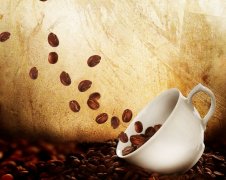Caffeine is one of hundreds of chemicals found in coffee.

Caffeine is one of hundreds of chemicals found in coffee. However, it is most notorious for its effects on many parts of our body, and it is also said that caffeine is harmful to us. Caffeine is found naturally in many plants, including coffee bushes and plants such as tea and cocoa.
Caffeine does have a stimulating effect on the human mind, which gives a cup of coffee a certain appeal. In fact, it could be said that drinking coffee has helped change the course of history. In 1773, it was the Boston Tea Party planned by citizens at the Boston Café, and in 1789 Camille de Moulins, coming out of the Café, led an angry mob that later toppled the Bastille.
There is a long-standing debate about whether caffeine is good or bad for humans. Caffeine improves endurance, allows athletes to train longer and helps them recover to the same level of competition. Scientific studies have also used caffeine to prevent the development of Parkinson's and Alzheimer's disease. However, too much caffeine can lead to insomnia, frequent urination, gastrointestinal disorders, arrhythmia, abnormal mental activity and osteoporosis.
The average cup of coffee (230 ml) contains about 8 ounces of caffeine. Because caffeine has natural antifungal properties, plants that are less conducive to fungal spore growth have less caffeine. At high altitudes, temperature and humidity make spores germinate too slowly, so Arabica beans grown at higher altitudes typically contain half as much caffeine as Robusta beans.
Roasting also changes the caffeine content of coffee beans. A common misconception is that the darker the color, the more roasted it is, the lower the caffeine content. However, the caffeine content of caffeine in the roasting process is basically not affected. Caffeine has a very stable structure, but the boiling point of caffeine reaches 315 ° C, although the temperature of coffee roasting rarely exceeds 245 ° C. However, a small amount of caffeine is lost due to sublimation, one of which changes directly from solid to gas. This happens when the roasted coffee beans are at about 175 ° C.
The roasting process greatly changes the caffeine level of the coffee beans (coffee leanings), mainly due to evaporation of water, weight increase. However, since the roasted coffee beans are nearly half as large, this results in lower caffeine levels.
The most important factor affecting the caffeine content of a cup of coffee is the brewing method.
Important Notice :
前街咖啡 FrontStreet Coffee has moved to new addredd:
FrontStreet Coffee Address: 315,Donghua East Road,GuangZhou
Tel:020 38364473
- Prev

The traditional method of making coffee
Siphon brewing method: using the principle of steam pressure (a method invented by a marine engineer, probably inspired by a steam engine), the heated water flows upward from the lower beaker through a siphon and filter cloth, and then mixed with the coffee powder in the upper cup, and the ingredients in the coffee powder are completely quenched out, and the quenched coffee liquid flows again after removing the fire source.
- Next

From coffee beans to a cup of coffee
The process from coffee beans to a cup of coffee Coffee is a plant. But before it can be drunk, it must go through several stages and travel thousands of miles. Harvesting coffee beans Red coffee cherries from the coffee bush. Each coffee berry usually contains two types of coffee beans. The exception is male beans, where only one bean is produced. The flavor of beans is produced by the bush growing ring of coffee trees there
Related
- Detailed explanation of Jadeite planting Land in Panamanian Jadeite Manor introduction to the grading system of Jadeite competitive bidding, Red bid, Green bid and Rose Summer
- Story of Coffee planting in Brenka region of Costa Rica Stonehenge Manor anaerobic heavy honey treatment of flavor mouth
- What's on the barrel of Blue Mountain Coffee beans?
- Can American coffee also pull flowers? How to use hot American style to pull out a good-looking pattern?
- Can you make a cold extract with coffee beans? What is the right proportion for cold-extracted coffee formula?
- Indonesian PWN Gold Mandrine Coffee Origin Features Flavor How to Chong? Mandolin coffee is American.
- A brief introduction to the flavor characteristics of Brazilian yellow bourbon coffee beans
- What is the effect of different water quality on the flavor of cold-extracted coffee? What kind of water is best for brewing coffee?
- Why do you think of Rose Summer whenever you mention Panamanian coffee?
- Introduction to the characteristics of authentic blue mountain coffee bean producing areas? What is the CIB Coffee Authority in Jamaica?

